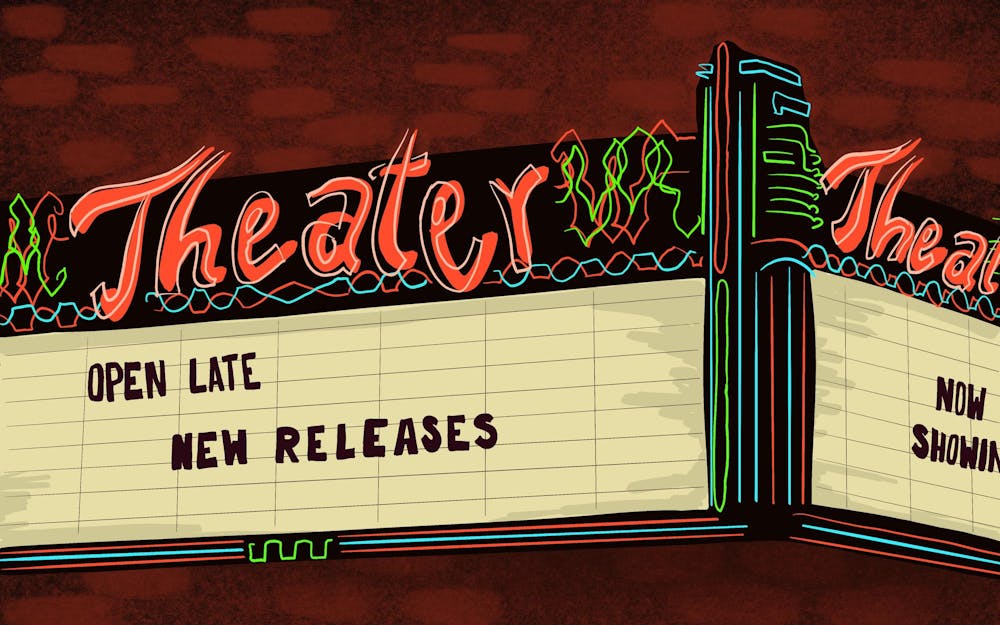This past Thursday, I watched “The Texas Chain Saw Massacre,” the original one from 1974, at the IU Cinema on a 35mm presentation the university just happened to have in its archives. The cinema was specifically seeking out a damaged print, something that would emulate the subversive, grimy style of grindhouse theaters from the 1970s. That is, the exact sort of theater that would’ve been interested, without hesitation, in showing the exact sort of violent exploitation feature Tobe Hooper’s independent horror film represents.
It was a packed showing, maybe the most packed I’ve seen at the IU Cinema in a while. It was a perfect demonstration of the ability for a theater experience to totally upend the way one watches a film. “The Texas Chain Saw Massacre” is one of my favorite horror movies ever; I’d seen it maybe two or three times, at least, before this showing. And yet, despite knowing everything that was going to happen, despite having already been scared by it once and twice and even three times over, I still felt like I was watching the film for the first time ever.
Sean Baker, after accepting the Oscar for Best Director for “Anora” at this year’s Academy Awards ceremony, brough this topic into the spotlight when he used his speech to proselytize the importance of the theater experience.
“Where did we fall in love with movies? At the movie theater,” he said. “In a time when the world can feel very divided, this is more important than ever: it’s a communal experience you simply don’t get at home.”
It’s no secret the movie theater business has experienced a notable downturn since COVID-19 forced most of them to shut their doors. But it’s also important to understand the decline of the movie theater has been a slow one: even here in Bloomington, there’s a long history of venues — many of them independently owned — that have closed, leaving behind a legacy shrouded in relative obscurity.
The Von Lee Cinema, for example, built in 1928 as the Ritz Theatre and renamed 20 years later, was bought out by Kerasotes Theatres in 1976. Operations were suspended in 2000 after Kerasotes built two multiplexes in the city. If you’ve never heard of Kerasotes — which once operated 957 screens at 95 locations across the country — you’d be forgiven: it too no longer exists, bought out by AMC Theatres in 2010 and shuttered just last year. It’s the sort of irony that makes you wonder what it was all for.
Which makes it all the more depressing that the Von Lee is now known primarily for being the site of a Noodles & Company on Kirkwood Avenue. I just can’t think of a better image of late-stage capitalism completely consuming our cultural landscape.
Still, despite it all, the cinema experience, however laboriously, lives on. Independent theaters are still operating and thriving throughout the country. The IU Cinema is a perfect example but so is the Buskirk-Chumley in downtown Bloomington or the Kan-Kan Cinema and Living Room Theaters in Indianapolis. Cicada Cinema, a local pop-up “theater” that regularly shows films at various bars, coffeehouses and galleries around town, demonstrates the desire, however niche, for alternative options.
I enjoy going to AMC as much as anyone else; I have AMC A-List for that reason. But these left-of-mainstream options — of which I’ve probably not even named a fraction — are vital. The cinematic ecosystem, for lack of a better phrase, can only thrive with the existence of avant-garde arthouse films and weird, offbeat midnight movies. We need a place to yell at the screen together while watching “The Rocky Horror Picture Show” every year just as much as we need a place to take our kids to go and see “Paddington in Peru.”
And it all comes back to the fact that, at their root, movie theaters are important because it is important to experience movies communally. The ability to watch movies at home is an amazing one, and there’s a thriving community of home media enthusiasts. But they were meant to be seen, first and foremost, in a cinema with a whole crowd of other people, just as one was meant to see “Nighthawks” or “The Starry Night” in a public art museum.
Humans are social animals. We desire collectivity. It’s for this reason that I find the act of experiencing art with other people to be so immensely life-affirming. It’s something we’ve been doing since we somehow, by some unexplainable miracle of evolution, figured out how to create pigments and decided to draw hunting scenes on the walls of caves.
I love watching a movie with a crowd of people. I love it when we all have the same reactions at the same moments. I also love it when people have different reactions at different moments because we’re a diverse species and it’s only natural. I love it when the entire auditorium is silent and totally engrossed in a movie we’re all going to leave the theater calling a masterpiece. Maybe I don’t totally love when people talk during a movie, or crinkle their candy wrappers during a movie, or chew too loudly during a movie, but that’s okay because this is exactly what being in a crowd of people experiencing life is all about.
I love going to the movie theater because I love existing among other people. It’s the beauty of the human experience in microcosm and it must, and I have no doubt that it will, endure.






